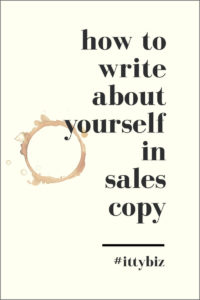 Pain points are a big deal in copywriting, and for good reason: People will do more to avoid pain than they will to gain a positive benefit in their life.
Pain points are a big deal in copywriting, and for good reason: People will do more to avoid pain than they will to gain a positive benefit in their life.
It’s one of the core reasons we procrastinate as well.
The pain of starting on a task (or facing it) can easily outweigh any and all benefits we might receive by Doing The Thing. So we move away from that pain, even though the greater cost is one we’ll regret later.
Pain points, then, are used in marketing to leverage that quirk of human psychology.
If you can make the potential customer experience enough pain about their current situation (or fear of loss in the future), it’s a lot easier to encourage them to take action and buy your product.
Most human beings don’t like causing other people pain.
This presents a bit of a challenge for you, as a marketer.
You don’t want to cause people pain. And you certainly don’t want to take your knowledge of pain points and engineer it to cause the maximum amount of pain just to make sales.
And yet… your product solves a problem that causes people legitimate pain or unhappiness. And you want them to know that their pain can be helped by your product.
So what are you supposed to do, while still keeping your integrity?
You have options.

 Over the last 13 years, IttyBiz has averaged a 3% refund rate in an industry that averages 20-30%.
Over the last 13 years, IttyBiz has averaged a 3% refund rate in an industry that averages 20-30%. Sales pages – for the most part – need some kind of imagery or graphics in order to convert at their best.
Sales pages – for the most part – need some kind of imagery or graphics in order to convert at their best. Sales pages are like the packaging that a physical product comes in – they contain words, pictures and design that helps a potential customer evaluate whether or not they want to purchase what’s inside the box.
Sales pages are like the packaging that a physical product comes in – they contain words, pictures and design that helps a potential customer evaluate whether or not they want to purchase what’s inside the box. Introducing yourself – whether on a sales page, an about page, or the bio at the bottom of a blog post – is one of the more challenging aspects of copywriting for people.
Introducing yourself – whether on a sales page, an about page, or the bio at the bottom of a blog post – is one of the more challenging aspects of copywriting for people.